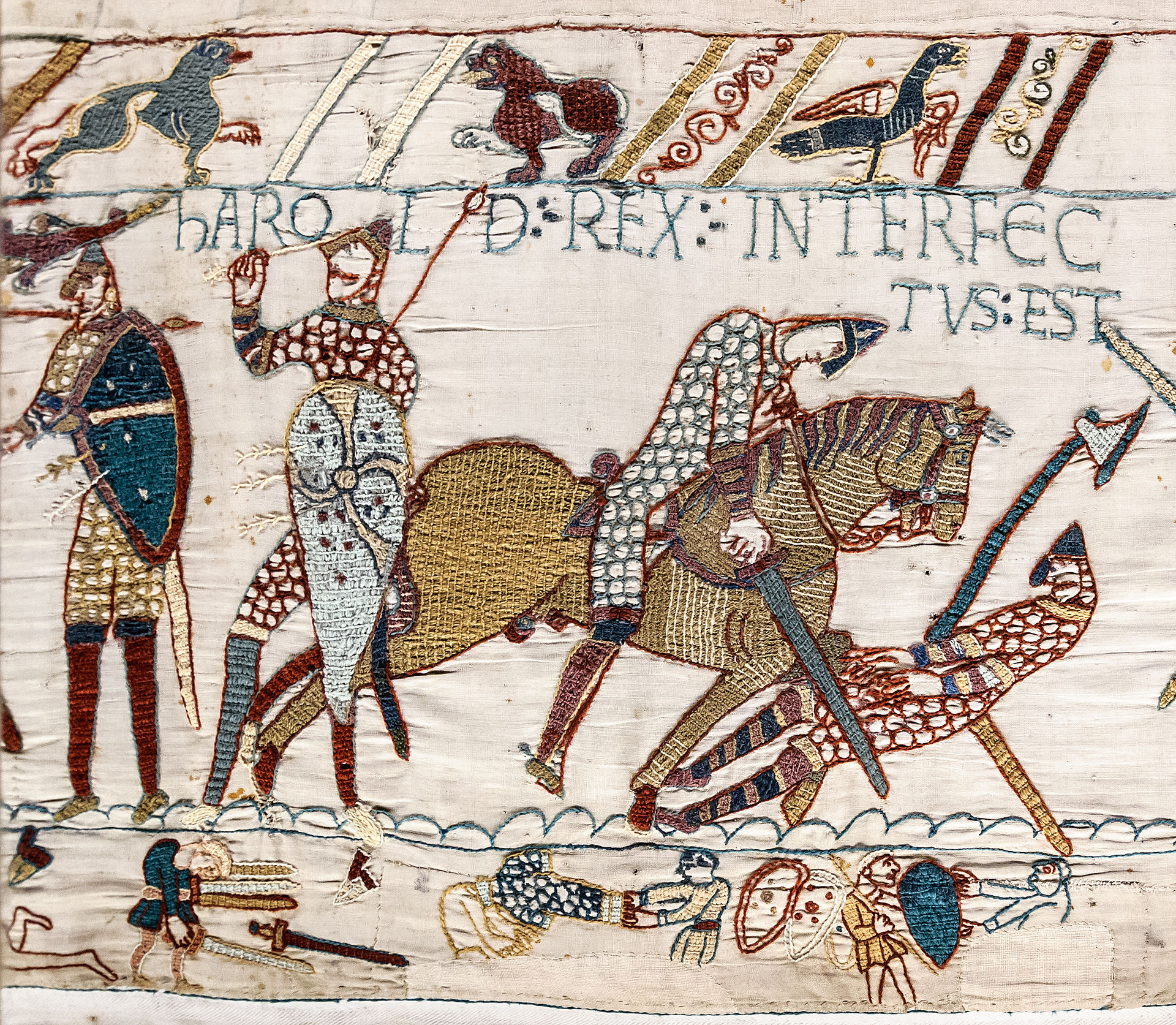The poem 'Battle of Hastings'
2022-06-19
Early this millenia I heard an English coin maker called Dave recite a poem about battle of Hastings.
It was both fun and captivating to hear, describing the events on the famous Bayeaux Tapestry in a light comical tone like it would have been a football match.
Eventually I learned this poem as well and to help other people to learn it I put it in writing below.

The poem
Let's go and put wind up at saxonsBill said;
By gum that's an idea!He turned around to his cohords, he raised his big norman voice, shouting;
Hand up, who's comming to England?They all knew they had no choice. They set off around about teatime. The sea was very calm and still. At a quarter to ten the next morning, they arrived at a place called Bexhill. King Harold rode up as they landed, his face full of venom and hate. He said;
Look, if you've come for the regatta, you got here six weeks to late.At this William rose, cold but haugty. He said
Now give us none of your cheek. You best have your throne re-upholstered, 'cause I'll want to use it next week.When Harrold heard this here defiance, with rage he turned purple, then blue. He shouted some rude words in saxon, to wich William replied
And you too!It was a beautiful day for a battle. The normans set off with a will, and when both side were assambled, they tossed for the top of the hill. King Harrold won the advantage. On the hilltop he took up his stance. With his knaves and his cads all around him, on his horse, with his hawk, on his hand. The normans had naught in their favor, their chance of victory seemed small, for the slope of the field was against them, and the wind in their faces and all. The kickoff was sharp at two thirty, and as soon as the whistle had blown, both side started slamming eachother, 'till the swineheards could hear them in Kent. The saxon had best line of forward, well armed with both buckler and sword. But the normans had best combinations, so at 'alftime neighter had scored. The duke called his cohords together and said;
Ok, let's pretend that we're beat, and bring saxons down onto level, then cut off their means of retreat.So they ran, and the saxons ran after, just exactly as William had planned. Leaving Harrold alone on the hilltop, on his horse, with his hawk, on his hand. When the conqueror saw what had happened, a bow and an arrow he drew. He rode straight up to Harrold and shot him. He was offside, but what could they do? The normans turned round in a fury, gave back both parry and thrust. 'till the battle were over bart shouting, and you couldn't see saxons for dust. When the battle finally were over, they found Harrold so stately and grand, sitting there with an eye full of arrow, on his horse, with his hawk, on his hand.
Notes on telling the poem.
The poem takes about five minutes to recite. It's best told after dark, outdoors, in front of a fire and prefferably in a medieval setting.
It's best told with a dynamic voice. Take pauses. Raise the voice when the combatants speak. Slow down when the tone of the poem is reflective. Also, it's preferably told in a heavy brittish rural dialect.
Accompanied gesture
The repeated phrase on his horse, with his hawk, on his hand
is best supported by raising your left arm in a horizontal angle in front of you, and your right arm having the elbow resting on the left hand, with the right hand angled forward - like a hawk on the left hand.